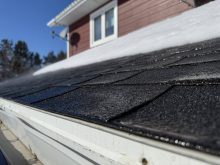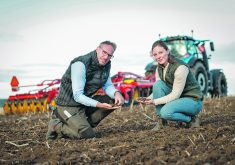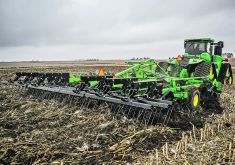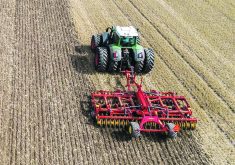The system lets producers know what’s happening in their fields and then makes recommendations on what to do next
Prospera Technologies has deployed the algorithms it developed for the greenhouse sector to turn irrigation pivots into robots that can manage crops autonomously.
Prospera started operations in 2014 with a team of computer scientists who wanted to use computer vision and artificial intelligence to help farmers make in-season decisions.
It now helps to manage more than $5 billion of annual greenhouse production for the largest produce growers in the world, said Prospera chief executive officer Daniel Koppel.
“When we started the company we were very focused on computer vision,” he said.
Read Also

Farming Smarter receives financial boost from Alberta government for potato research
Farming Smarter near Lethbridge got a boost to its research equipment, thanks to the Alberta government’s increase in funding for research associations.
“We would take imagery from the greenhouse and detect it for pest, disease, nutrient deficiency, things like that.”
Prospera then brought more data sets into its algorithms, including soil and climate data, and further improved its ability to turn sensor data into production recommendations that increase yields.
The company now offers solutions for greenhouses capable of autonomously managing crop production, including fertilizer and crop protection inputs, and provides growers with easy-to-read insights via mobile and web dashboards.
“We look at multiple data sets and use our algorithms to provide growers with not just the basic layer of visualizing data, but actually making it into actionable insights or specific recommendations about the decisions that need to be made throughout the season,” Koppel said.
In 2019, Prospera teamed up with Valley Irrigation, which has equipment irrigating approximately 25 million acres every year, to offer an artificial intelligence-based crop monitoring and detection service, through a subsidiary called Valley Insights.
This spring Valley Insights quadrupled its coverage area in the United States and is now offered in Washington, Texas, Nebraska and Idaho.
High resolution RGB, infrared and thermal sensors installed on irrigation pivots collect images of the crop each time it moves across the field. This information is collected and analyzed by the Prospera’s artificial intelligence programs that can detect field anomalies, including areas with pests, disease, insects and nutrient deficiencies, and then provide recommendations to the farmers.
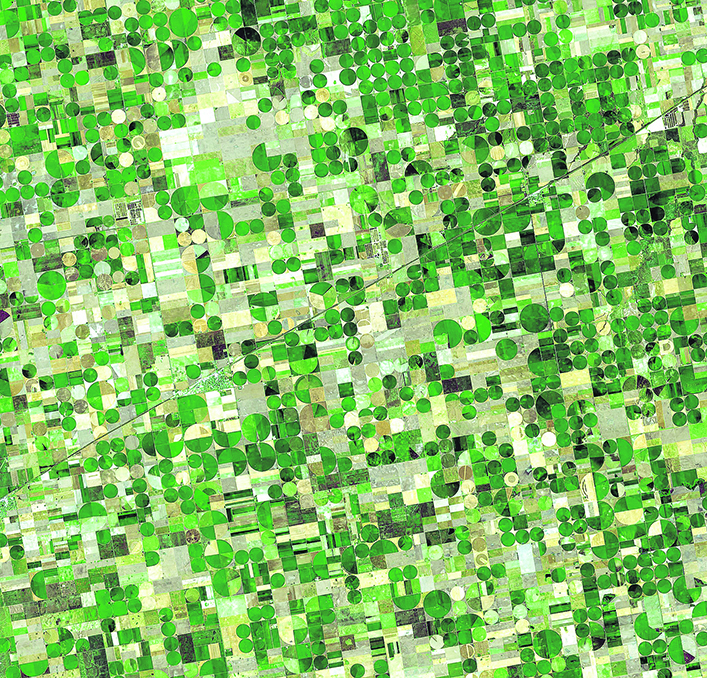
Prospera will also incorporate data sets from satellite imagery, drones, planes, soils sensors and weather information.
“We’re a hardware and sensor agnostic,” Koppel said.
“We combine them (data sets) together and in turn provide the growers with insights about what’s going on in the field, where there are different anomalies, and how to optimize their irrigation, fertigation and chemigation decisions.”
Koppel said Prospera can provide three steps of service with the pivots.
- Provide interesting and valuable insights such as areas on the field that are over or under irrigated or where the pivots are having hardware issues.
- Come up with a prescription to deal with specific agronomic problems, which is the most difficult step.
- Get the system to co-ordinate an automated response, including variable rate applications, once the pivot’s automated functions are connected, similar to how Prospera is integrated in greenhouses.
“The second step is we actually give them a recipe, and the third step is that we actually just connect the dots. The difference between number two and three is not the major issue,” Koppel said.
For the third step, growers can take a hands-free approach and let Prospera make all of the irrigation decisions, and then a producer or agronomist can monitor the system to make sure there weren’t any mistakes.
This is made possible by flow meters and climate sensors as well as automated controls developed by Valley Irrigation.
“We have their solutions, end to end for growers,” Koppel said.
However, it will take time for growers to get used to and trust the technology before they let it work totally autonomously.
“We can’t say these millions of acres are being autonomously irrigated, that’s not the case. But in terms of technology, it’s something that is very feasible; we’re just taking it a step at a time,” Koppel said.
This summer Valley Insights is conducting trials with the sensor systems, including weed and nutrient detection.
Prospera also offers solutions for broad acre, non-irrigated crops.
Any data sets producers have can be entered into the company’s algorithms, which that will help growers with prescription decisions.
He said on non-irrigated fields where sensors can’t be placed on the pivot, Prospera has benchmarked multiple layers of sensor information and found that a combination of data from satellites and planes is the most cost effective approach.
“We’re finding a lot of value from aerial (airplane), especially at scale. It all comes down to the cost of data acquisition. I think that is in general the name of the game — how much it costs you to get data,” Koppel said.
He said drones have more operational and regulatory challenges compared to plane-acquired data, and their cost is prohibitive unless farmers fly their own.
“Aerial (airplane) is providing a lot of value for things like weeds and emergence and different diseases and pests where you can reference areas for you to check, and it’s substantially better than satellite today,” Koppel said.
“Satellites are very low resolution, so it’s very difficult to say a lot of smart things with satellites.”






